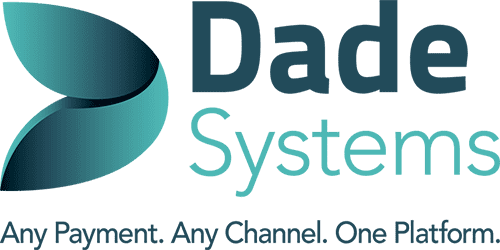
Defending Commercial Deposits From Emerging Risks
Brought to you by DadeSystems

The competition for commercial deposits has become fiercer
in the new decade.
The rate of noninterest deposits growth has been declining
over the last three years, according to quarterly reports from the Federal
Deposit Insurance Corp. The percentage of noninterest deposits to total
deposits has also dropped over 250 basis points since 2016. This comes as the
cost of funding earning assets continues to rise, creating pressure on banks’
net interest margins.
At the same time, corporate customers are facing changes in their receipt of payments. Emerging payment trends are shifting payers from paper-based payments to other methods and avenues. Checks and paper-based payments – historically the most popular method – continue to decline as payers’ preferred payment method. Electronic payments have grown year-over-year by 9.4%.
Newer payment channels include mobile, point of
presentment and payment portals. However, these new payment channels can
increase the cost of processing electronic payments: 88% of these payments must
be manually re-keyed by the accounting staff, according to one study. This
inefficiency in manually processing payments increases costs and often leads to
customer service issues.
Treasurers and senior corporate managers want automated solutions to handle increased electronic payment trends. Historically, banks have served their corporate customers for years with wholesale and retail lockbox services. But many legacy lockbox services are designed for paper-based payments, which are outdated and cannot handle electronic payments. Research shows that these corporate customers are turning to fintechs to solve their new payment processing challenges. Payments were the No. 1 threat that risked moving to fintechs, according to a 2017 Global Survey from PricewaterhouseCoopers.
Corporate customers are dissatisfied with their
current process and are looking to use technology to modernize, future-proof,
and upgrade their accounts receivable process. The top five needs of today’s
treasurer include: enterprise resource planning (ERP) integration, automated
payment matching, support for all payment channels, consolidated reporting and
a single historical archive of their payments.
Integrated receivables have three primary elements: payment matching, ERP integration and a single reporting archive. Automation matches payments from all channels using artificial intelligence and robotic process automation to eliminate the manual keying process. The use of flexible business rules allows the corporate to tailor their operation to meet their needs and increase automated payments over time. A consolidated payment file updates the corporates’ ERP system after completing the payment reconciliation process. Finally, integrated receivable provides a single source of all payment data, including analytics and reporting. An integrated receivables platform eliminates many disparate processes (most manual, some automated) that plague most businesses today. In fact, in one recent survey, almost 60% of treasurers were dissatisfied with their company’s current level of AR automation.
Banks can play a pivotal role in the new payment
world by partnering with a fintech. Fintechs have been building platforms to
serve the more-complex needs of corporate treasury, but pose a threat to the banks’
corporate customers. A corporate treasurer using a fintech for integrated
receivables ultimately disintermediates the bank and now has the flexibility to
choose where to place their depository and borrowing relationships.
The good news is that the treasurer of your corporate customer would prefer to do business with their bank. According to Aite Research, 73% of treasurers believe their bank should offer integrated receivables, with 31% believing the bank will provide these services over the next five years. Moreover, 54% of the treasurers surveyed have planned investments to update their AR platform in the next few years.
Many fintechs offer integrated receivables today, with new entrants coming to market every year. But bankers need to review the background and experience of their fintech partner. Banks should look for partners with expertise and programs that will enable the bank’s success. Banks should also be wary of providers that compete directly against them in the corporate market. Partnering with the right fintech provides your bank with a valuable service that your corporate customers need today, and future-proofs your treasury function for new and emerging payment channels. Most importantly, integrated receivables will allow your bank to continue retaining and attracting corporate deposits.


